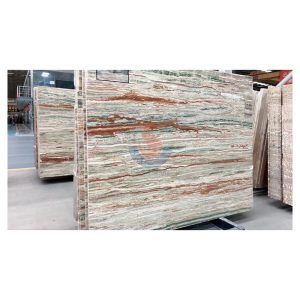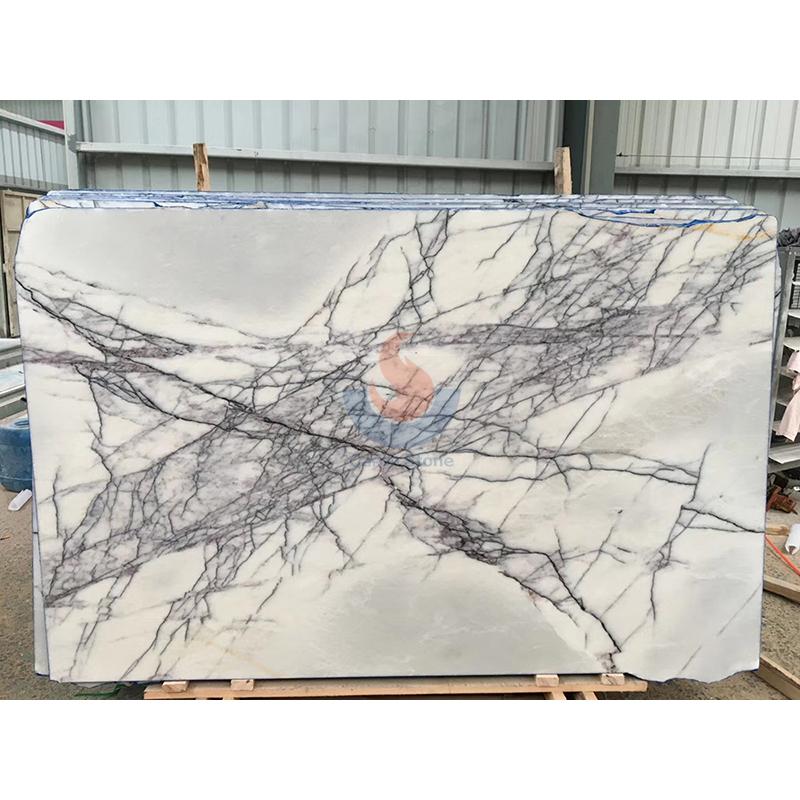Walking into the lobby of a luxury hotel, the smooth white marble floor always makes people stop and admire. Still, this beautiful and noble stone is not always easy to maintain. Whether they are the stone bricks set on the ground or the marble counters at home, they could run across stains, scratches, and other issues in regular use. Marble’s anti-pollution capacity: how strong is that? How can one preserve it to have long-term original brilliance? Today we will discuss marble’s anti-pollution properties and provide some doable cleaning and maintenance techniques to enable you to better care for this natural beauty.

Sahara Noir Marble Slab
Anti-pollution ability of marble: natural flaws do not cover up the merits
As a natural stone, marble has unique textures and colors due to its mineral composition. But when it comes to stains, these lovely textures also give marble some fragility. Calcium carbonate makes up most of marble; it will react chemically when it comes into contact with acidic materials to produce surface of the stone degradation or discoloration. This implies that in ordinary life normal juice, coffee, red wine, even vinegar can destroy marble. If these liquids stay on the marble surface for a long time, the stains will penetrate into the pores of the stone and become difficult to remove.
In addition, the microporous structure of marble is also one of the reasons for its limited anti-pollution ability. Marble has natural small pores on its surface that allow liquids and stains to pass through it more easily than synthetic stone. Not even polished marble can totally prevent the stain penetration issue. Marble is therefore gorgeous, but its anti-pollution capacity is weak, which emphasizes regular maintenance especially.
Cleaning and maintenance of marble: daily care tips
In the face of these “weaknesses” of marble, reasonable cleaning and maintenance strategies are particularly important. These useful advice will enable you to retain Marble’s fresh and new look as well as efficiently increase its anti-pollution capacity.
1. Immediately clean liquid stains.
Marble is sensitive to acidic compounds, hence, during everyday use, it is crucial to remove any liquid spilled on its surface right away. Whether it’s red wine, coffee, or juice, if it spills on the marble countertop or floor, carefully wipe it with a fresh soft cloth right away to stop the liquid from seeping into the stone. If the stain has already penetrated, you can try to use a mild stone cleaner to treat it, but never use cleaners containing acidic or alkaline ingredients to avoid further damage to the marble.
2. Use special sealants
In order to improve the anti-pollution ability of marble, you can apply special stone sealants on its surface regularly. Effective filling of the micropores on the marble surface by the sealer lowers the possibility of liquid and stain penetration. To maintain its protective action, the sealant should be reapplied generally every six months to a year. When using the sealant, you need to choose the appropriate product according to the type of stone and the specific use environment, and strictly follow the instructions to achieve the best effect.
3. Avoid scratches from hard objects
Marble is tough, however hard items can nevertheless scrape its surface. In daily life, you should avoid cutting food directly on the marble countertop or placing sharp objects such as knives and keys. To lower the possibility of scratches on the marble surface, it is advised to work on a mat or cutting board. When moving bulky goods on marble flooring, try not to drag to avoid surface damage. If the marble surface has minor scratches, you could want to think about using marble polish to fix them; but, if significant scratches call for it, you could have to deal with experts.
4. Regular polishing and waxing
In order to maintain the gloss and beauty of marble, it can be polished and waxed regularly. Polishing can remove small scratches and stains on the surface and restore the original gloss of marble, while waxing can form a protective film on the marble surface to further enhance its anti-fouling ability. Usually once a year, the frequency of waxing and polishing reflects the usage. Professional stone care chemicals should be used for polishing and waxing; household cleaners should be avoided rather.
5. Prevent contact with acidic substances
In daily use, try to prevent direct contact of acidic chemicals with the marble surface since they readily erode by them. For example, avoid splashing lemon juice, vinegar, etc. on marble countertops when cooking, and avoid using acidic detergents when cleaning the bathroom. Should you unintentionally come into touch with acidic materials, wash with pure water and wipe dry right away to stop the development of corrosion marks.
Restoration and professional care of marble
Marble may still have some inevitable flaws in real use despite the aforementioned daily maintenance guidelines, such deep stains, significant scratches, or surface gloss loss. In this instance, one should go for expert stone care treatments. Usually equipped with specialized tools and technology, professional stone care businesses may deep clean, re-polish or repair marble, and even carry out difficult tasks such caulking and edge sealing. Apart from extending the lifetime of marble, regular expert treatment helps to preserve its best appearance.

Natural stone transparent marble open book green onice onyx
With its unique beauty and texture, marble has become the preferred material for many high-end buildings and home decoration. This natural stone does, however, have poor resistance to pollution, hence daily use calls especially close care. We may greatly increase the lifetime of marble and preserve its natural brightness by fast removing liquid stains, applying sealants, avoiding scratches, and routinely polishing and waxing. In addition, when marble has difficult problems, seeking professional care services is also the key to maintaining its beauty and performance. Marble’s beauty should be valued as well as carefully maintained to keep it radiant with time.





